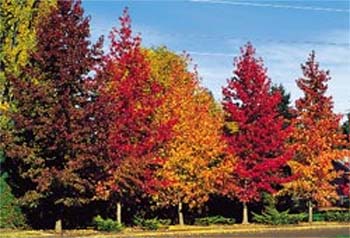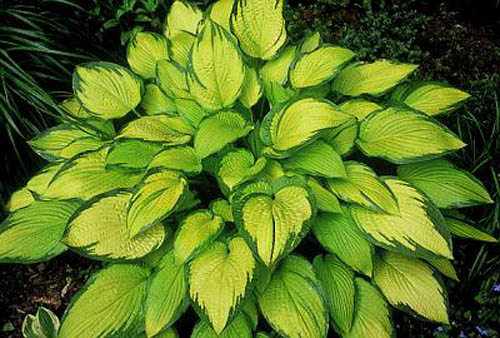No Way! No How! Was my immediate response when ask a few years ago if we would be using ornamental grasses in our gardens. My beds were just too small and the sunny areas too precious to be taken over by such big unruly plants.
Of course, this was like when I was a kid telling the little girl next door to get lost saying “Who wants a girl hanging around ?” only to discover a few years later that they were not so bad after all. Needless to say, today we use many varieties of grasses in our gardens.
Why not? Grasses truly are attractive and not rampantly aggressive. Sort of like that girl next door. Like their weedy cousins, ornamentals are tough, resilient and not susceptible to any insect or disease problems. Best of all they require no weeding, spraying, and much less fertilization than other garden plants.
Ornamental grasses are an excellent choice for gardeners trying to create a low maintenance landscape. Once established, they require no watering and only a late Winter hair cut to promote new growth. Even the most novice gardener cannot go wrong growing grasses.
What better plant, with their strong vertical form and feathery flower heads, for a border or privacy screening? The leaf blades add fine texture and colors of metallic blues, burgundy, white, creamy yellow and every shade of green imaginable.
On top of this their foliage is always simmering, catching the sun’s rays in ever changing patterns. Throw in their impressive array of flower plumes and seed heads, add a few butterflies and birds, and you have one very beautiful garden setting.
Ornamental grasses grow best in full to partial sun, but will tolerate a wide range of conditions. Grasses are not fussy about the soil conditions. If you are planting them into an existing bed, just add a few inches of organic matter and till in. For a new bed we like to work the soil deep, adding lots of organic matter. While this does not necessarily improve vigor it does make future moving or dividing easier. Grasses can be planted successfully just about any time of the year. Just be careful to plant them at the same level they were potted at , and water it in well.
Most grasses go dormant during the Winter months. In late January, cut the plants back to within a few inches of the ground. If possible, burn the dead foliage instead of cutting as this promotes vigorous new growth. Whether you cut or burn, it must be done before the fresh, new growth comes up.
Some grass we have used successfully in our garden are:
- Cortaderia selloana ‘Pumila’
- Miscanthus sinensis ‘Morning Light’
- Miscanthus sinensis ‘Yaku Jima’
- Panicum virgatum ‘Cloud Nine’
- Panicum virgatum ‘Northwind’
- Panicum virgatum ‘Prairie Sky’
While these we found easy to use, there are many more out there to try. We recommend that you visit our Plant Data Base (www.myg.info) and go to Amber Wave’s ornamental grass site (http://www .amberwavegardens.com/) to see just how great grasses look. As you will discover, these rugged plants have much to offer the home gardener.
Tips: Maintaining Ornamental Grasses
To maintain their vigor ornamental grasses will need to be divided every few years. You will begin to notice new growth only appearing at the sides of the clump, leaving a naked center. This indicates that too much woody, old growth has smothered the new growth. Even if a new shoot emerges from the woody core, there is little chance for it’s survival.
While ornamental grass is not the easiest plant to divide it can usually be done by those in reasonably good shape and of strong heart. It helps if you have had practice wrestling grizzly bears or bull dogging. Seriously, it can be a battle. The first time I tried, I gave up. After two hours, three shovels, and one very sore back, decided the task could wait another year.
Tools you will need are; several shovels (you are bound to break a few), a mutt, pickax, a few sharp spades, large knife, pruning shears, and an ax. A sturdy wheel barrow or garden cart is helpful but not essential.
First, cut off the foliage to about 4-6 inches above the crown. Dig the plant up completely and remove it from the ground. While this sounds easy it is not. Most ornamental grasses have deep growing dense root balls which will require a lot of time and effort to dig up.
Next cut the clump into divisions with a sharp spade, a large knife, or more likely an ax. Begin by using your spade to cut through the core on one side. Use a second spade to cut the opposite side. The two spades should face opposite directions. Pull the spades in each direction to pry the first divisions apart.
Begin by cutting the clump into halves, then quarters. The first cut will be the toughest because of the hard texture of the core. As it becomes possible, remove smaller divisions from the clump, by pulling them away from the parent plant by hand. Remove dead or diseased material from each individual division.
Replant or pot all divisions, even a single stalk will produce a new plant if it has a few healthy roots. In a few seasons, your divisions will, grow into healthy, mature plants.



